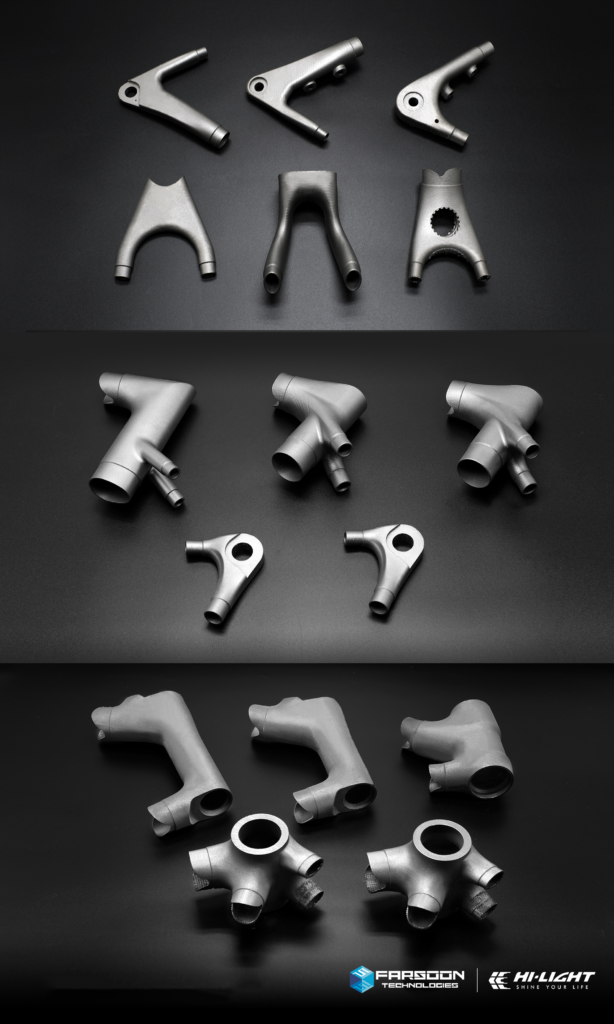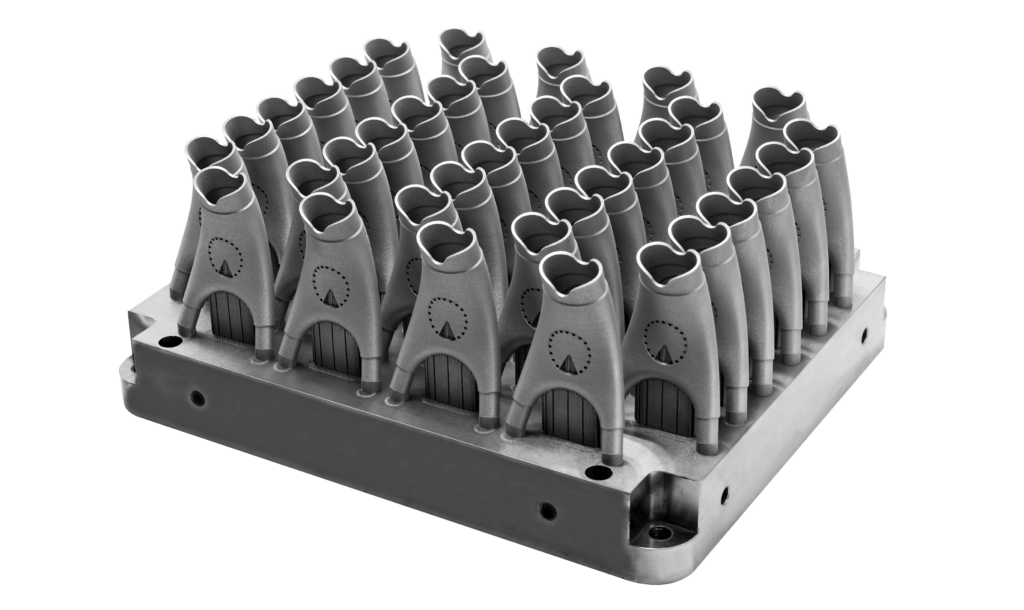The cycling industry is embracing 3D printing. 3D printed saddles have become a success story, and firms are now 3D printing frames and various other components. Chinese firms Hi-Light (also known as Hanglun) and Farsoon are looking to produce titanium 3D printed components as well. Hi-Light is a major manufacturer of titanium bicycle components and frames. The company sells frames under its own brand and also produces for other brands. Hi-Light claims to hold an 80% share of the Chinese titanium road bike market and manufactures 18,000 frames annually.
Few of these are 3D printed today, but the company hopes to change that. Currently, they have a quad-laser Farsoon FS350M and aim to produce 50,000 parts per year. The parts they manufacture include connectors, head tubes, yokes, and forks. These are geometry-defining components located at the intersection of multiple tubes. Many bike companies are interested in these components because they are relatively easy to produce and comparatively cost-effective. By customizing these parts and combining them with standard tubes, it’s possible to achieve geometry tailored to a specific rider or create a new bike design quite easily.
Made with fewer parts and requiring fewer production steps, this approach could be more efficient in the long run. Hi-Light believes that this method may result in less deformation and better interfaces with other components. The company states that they can print 38 of these components per day. According to Hi-Light, the components have been optimized for ride comfort and stiffness. While the company still plans to use casting for most of its components, it hopes that 3D printing will provide greater flexibility.
¨3D printing is a game-changer in our industry and is leading the way in innovation. It pairs perfectly with traditional precision casting. Right now, we use precision casting for big production runs and 3D printing for those smaller, custom projects. This mix lets us create lighter, more complex, and highly customized bicycle parts. Plus, it helps us cut down on costs and environmental impact for small-batch production, speeds up delivery times, and makes the whole process smoother and more efficient,” said Yanpeng Yang, Vice General Manager of Hanglun.
The company also hopes to iterate more quickly and potentially create lighter-weight components. Through 3D printing, Hi-Light claims to have reduced the frame weight to 1.4 kilos while maintaining the same strength. Currently, many companies are turning to 3D printing for end-use parts in bikes, with components like head tubes and other connectors in high demand. Surprisingly, it’s not the large companies like Giant or Trek, nor the high-end established brands like Colnago and Cervelo, leading this innovation. Instead, smaller, niche road bike brands are at the forefront. These more agile companies can adopt new technologies faster and take greater risks. For them, 3D printing offers speed, marketing advantages, and the ability to position themselves on the cutting edge of bike design. So far, this strategy is paying off, as these companies are successfully shipping end-use 3D printed products.
Now, with Hi-Light, we see a different kind of company trying to make its mark in 3D printing. While Hi-Light ships frame sets for road bikes, it is not yet a full-fledged road bike company. It does offer some complete bikes, like children’s bikes and BMX bikes, but primarily focuses on road frame sets and components, such as headsets. The headset, which allows the steering and front wheel to turn smoothly, is crucial but typically not a prominent branded component, often costing only a few dollars. Hi-Light also manufactures bottle cages, forks, and similar components.
For Hi-Light, 3D printing presents an opportunity to advance. It allows the company to produce higher-value versions of its current products, leading to increased revenue. Moreover, 3D printing could enable Hi-Light to consider expanding into complete bike manufacturing for export. The company could evolve into a Dedacciai for 3D printed titanium or follow a path similar to Cinelli, transitioning from components to complete bikes. For Hi-Light, 3D printing offers a chance to move from commoditized parts to the forefront of innovation.
Subscribe to Our Email Newsletter
Stay up-to-date on all the latest news from the 3D printing industry and receive information and offers from third party vendors.
Print Services
Upload your 3D Models and get them printed quickly and efficiently.
You May Also Like
Making 3D Printing Personal: How Faraz Faruqi Is Rethinking Digital Design at MIT CSAIL
What if your 3D printer could think more like an intelligent assistant, able to reason through a design idea, ask questions, and deliver something that works exactly the way the...
Reinventing Reindustrialization: Why NAVWAR Project Manager Spencer Koroly Invented a Made-in-America 3D Printer
It has become virtually impossible to regularly follow additive manufacturing (AM) industry news and not stumble across the term “defense industrial base” (DIB), a concept encompassing all the many diverse...
Heating Up: 3D Systems’ Scott Green Discusses 3D Printing’s Potential in the Data Center Industry
The relentless rise of NVIDIA, the steadily increasing pledges of major private and public investments in national infrastructure projects around the world, and the general cultural obsession with AI have...
Formlabs Teams Up with DMG MORI in Japan
In late June, Nick Graham, Chief Revenue Officer at Formlabs, announced on LinkedIn that the company had partnered with DMG MORI, one of the world’s leading machine tool companies, to...



































